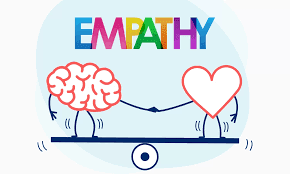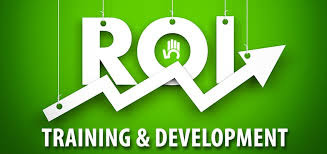The Empathy Edge: How Leaders and Managers Engage Differently
Empathy
is a powerful tool in the workplace, fostering trust, motivation, and a
positive work environment. But have you ever questioned if there's a difference
in how leaders and managers engage their teams through empathy? The answer is
yes, and understanding these differences can make you a more effective leader
or manager.
First,
we look at what is the Empathy?
In
its simplest form, empathy is the ability to recognize emotions in others and
to understand other people's perspectives on a situation. At its most
developed, empathy enables you to use that insight to improve someone else's
mood and to support them through challenging situations. (Mind
Tools,2024)
Leaders
Inspiring the Big Picture
Leaders
set the overall vision and direction of an organization. Their empathy focuses
on understanding the collective emotions, needs, and aspirations of their team.
They use this as follows;
- Understand the Team's Cause- Leaders understand the challenges and frustrations their teams face. They support their needs, securing resources and opportunities for growth.
- Foster a Culture of Belonging-Leaders create an environment where everyone feels valued and respected. They celebrate a range of thoughts and experiences, fostering a sense of community within the team.
- Motivate Through Inspiration- Leaders connect with the team's emotional core, aligning individual goals with the company's mission. This emotional engagement fuels a sense of purpose and inspires high performance.
Think
of a leader as an architect, using empathy to design a work environment where
everyone feels empowered to contribute their best.
Managers; The Hands-on Approach
Managers
directly supervise day-to-day operations and employee performance. Their
empathy focuses on understanding the individual needs and challenges of each
team member. They use empathy as follows;
- Provide Supportive Feedback - Managers deliver constructive criticism with empathy, acknowledging the effort behind the work while offering guidance for improvement.
- Resolve Conflicts Effectively- By understanding the perspectives of all parties involved, managers can facilitate disagreements fairly and find solutions that address everyone's concerns.
- Promote Work-Life Balance-Managers recognize that employees have personal lives. They show empathy by offering flexible work arrangements or acknowledging personal challenges that might impact work performance.
Imagine
a manager as a coach, using empathy to guide and support individual team
members in reaching their full potential.
The
Power of Empathy in Action
Let's
illustrate the difference in the same situation;
-A
team member is struggling to meet deadlines due to a personal situation. -
A
Leader's Approach- The leader might gather the team and acknowledge the
impact of external factors on work performance. They could explore alternative
approaches or delegate tasks to ensure the team's overall goals are met.
A
Manager's Approach- The manager might have a one-on-one conversation with
the team member, offering flexible schedules or adjusting workloads to
accommodate their situation. They would ensure the individual feels supported
and has the resources they need to succeed.
Empathy
is a Skill You Can Develop
(Sinek,2018)
Both
leaders and managers can benefit from improving their empathy skills. This can
be achieved by below practices;
- Active Listening- Pay close attention to verbal and nonverbal signs to understand what people are truly saying.
- Open Communication- Encourage open dialogue where team members feel comfortable sharing their concerns and ideas.
- Emotional Intelligence- Develop self-awareness and the ability to understand and manage your own emotions, allowing you to better understand others.
By
cultivating empathy, leaders and managers can create a work environment where
employees feel valued, motivated, and empowered to do their best work. This, in
turn, leads to increased engagement, productivity, and overall organizational
success. So, embrace your inner leader or manager, and leverage the power of
empathy to build a thriving team!
Reference
List
Mind
Tools (2024) Empathy at Work.Mind Tools. Available from https://www.mindtools.com/agz0gft/empathy-at-work
[accessed on 12.04.2024]
Sinek,S(2018)
Leaders practice Empathy [video]. Available from https://www.youtube.com/watch?v=c_XZ36b_aDI
[accessed on 12.04.2024]




Good blog and it will depend on western/Eastern culture ,this statement underscores the significance of empathy in organizational dynamics and highlights the importance of discerning how leaders and managers employ empathy. Understanding these nuances enables individuals to tailor their approach effectively, fostering stronger relationships, higher motivation, and improved overall team performance.
ReplyDeleteThis piece skillfully distinguishes between the more subtle functions of empathy in management and leadership, emphasizing the many ways in which each promotes a positive work environment. Leaders and managers can foster an environment where all team members feel appreciated and empowered by identifying these differences and developing their empathy, which will eventually boost engagement and organizational performance.
ReplyDeleteThis article brilliantly explores the nuanced role of empathy in leadership and management, shedding light on how understanding these differences can enhance effectiveness in both roles. It emphasizes empathy as a foundational skill for fostering trust, motivation, and a positive work environment. The practical examples provided, illustrating how leaders and managers approach empathy in different situations, offer valuable insights into real-world application. By highlighting the importance of active listening, open communication, and emotional intelligence, this article inspires leaders and managers to cultivate empathy, ultimately leading to increased engagement, productivity, and organizational success.
ReplyDelete"The Empathy Edge" explores how leaders and managers employ empathy to build rapport, inspire trust, and navigate challenges, fostering more meaningful and productive workplace relationships.
ReplyDelete